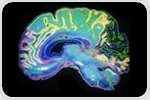
|
|
|
| |

|
|
| |
The latest life science microscopy news from AZoNetwork |
|
|
|
 | | |
 Novel Approaches to Lower Chemotherapy-Induced Toxicity Novel Approaches to Lower Chemotherapy-Induced Toxicity
Cisplatin is a widely used chemotherapy drug effective against various cancers, but its high toxicity can lead to severe side effects. Researchers in Barcelona explored two novel binding agents—gold nanoparticles and tricine—to reduce its toxicity while preserving efficacy. Using advanced cryo-imaging, they revealed promising results.
| |
|
|
|
|
 | | |  The mobile Detection of Oral Cancer (mDOC) system leverages AI to improve early detection and referral accuracy for oral cancer in dental care settings. The mobile Detection of Oral Cancer (mDOC) system leverages AI to improve early detection and referral accuracy for oral cancer in dental care settings. | | | | |  A new optical feature extraction engine, dubbed OFE2, reaches 12.5 GHz, enhancing AI applications in healthcare and finance with unprecedented speed and efficiency. A new optical feature extraction engine, dubbed OFE2, reaches 12.5 GHz, enhancing AI applications in healthcare and finance with unprecedented speed and efficiency. | | | | |  Rice University researchers studying a class of atom-thin semiconductors known as transition metal dichalcogenides (TMDs) have discovered that light can trigger a physical shift in their atomic lattice, creating a tunable way to adjust the materials’ behavior and properties. Rice University researchers studying a class of atom-thin semiconductors known as transition metal dichalcogenides (TMDs) have discovered that light can trigger a physical shift in their atomic lattice, creating a tunable way to adjust the materials’ behavior and properties. | | | | |  How Next-Gen Optical Sensors Are Transforming Medical and Environmental Monitoring How Next-Gen Optical Sensors Are Transforming Medical and Environmental Monitoring | | | | |  Measuring how well blood flows to the brain is crucial for understanding a wide range of neurological issues, from strokes to migraines to traumatic brain injuries. Obtaining such measurements noninvasively, however, remains a challenge. The scalp and skull not only obstruct viewing the brain directly but also have their own blood supply, further complicating cerebral blood flow measurements. Measuring how well blood flows to the brain is crucial for understanding a wide range of neurological issues, from strokes to migraines to traumatic brain injuries. Obtaining such measurements noninvasively, however, remains a challenge. The scalp and skull not only obstruct viewing the brain directly but also have their own blood supply, further complicating cerebral blood flow measurements. | |
|
|
|
 | | | How would you rate today's newsletter?
| |
|
|
|
 | | |
 |
Stay updated with the latest in health and medical news! Follow News‑Medical.net on Google News for real‑time updates. Click here to follow us now. |
| |
|
|
|
|
|